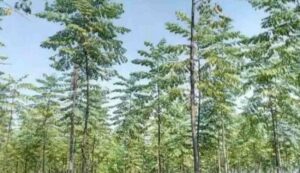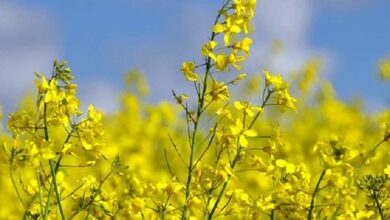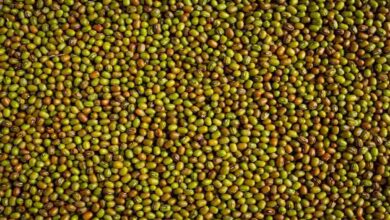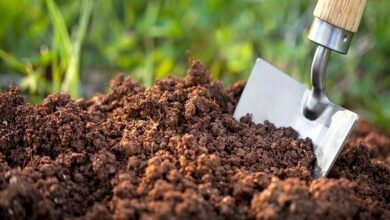If you want to earn a lot of money then cultivate Malabar Neem with this method
Cultivation of Malabar Neem: Welcome to the most extensive Malabar neem growing guide ever! No matter if you are a beginner or an experienced farmer, this extensive site is the perfect place to go for information about growing Malabar neem. From determining the right soil and climate to controlling pests and enhancing productivity, we can assist you with everything. The scientific name for fast growing Malabar Neem tree is Melia dubia; it is native to Australia, Southeast Asia and India. It is however economically important and versatile in agriculture.

This tree suits sustainable farming because it grows well in different types of soils that require less water. Farmers find the rapid growth of Malabar Neem (which can get 40 feet high within two years after planting) very useful. This tree finds application in plywood and timber industries found in Karnataka, Tamil Nadu, Andhra Pradesh and Kerala.
The wood from a malabar neem plant finds its way into various uses including construction as well as making musical instruments among other things. Additionally, supporting its cultivation does not only promote environmentally friendly practices but also increases rural revenue streams while offering growers a viable alternative to low input high returns crops.
Historical Significance and Applications
According to Hindu myths, few drops of heavenly potion known as Amrita landed on neem tree thus imparting supernatural healing powers onto it. For many centuries now this tree has been highly valued for its therapeutic properties which have deep spiritual meaning in Indian history books. Its traditional applications are found in ancient writings where their leaves were used for treating ulcers, barks cured brain diseases while flowers treated bile duct abnormalities.
It grows at an enormous pace – sometimes reaching 40 feet within two years – this means that it has been cultivated for various uses including fuelwood production. It has been utilized in agriculture as well as major industrial sectors like paper mills, match box factories & plywood units due to usage of its wood, while the seeds can be processed to give neem oil. It is also used as a remedy for pain, fever and infections.
The Perfect Climate for Growing Neem
While it can be grown in various agroclimatic zones, its growth is favoured by warm humid tropical climates where annual temperature ranges between 25-35°C. Although the tree may grow on different soil types, well drained sandy loam having pH limits of 6.5-7.5 is required to support optimum growth conditions of Malabar Neem plant. A uniform rainfall throughout the year and about 1000 – 2000 mm per annum is recommended for Malabar Neem cultivation.
Soil Requirements and Preparation
Any kind of soil can be used to grow this crop but deep rich sandy top soils are best suited for malabar neem growth. However, unlike other trees that take years to reach such tall heights this one grows up to forty feet within just two years after planting yet uses very little water. It is an important source of energy which can be harvested through mechanical pruning. The seedlings cannot thrive under shade while the tree needs sunlight. In addition the tree grows on red lateritic sandy loam soils with an annual rainfall exceeding 800mm.
Methods of Spreading Malabar Neem
Vegetative or seed germination techniques are some of the ways farmers can multiply their stock of malabar neem trees.
It is recommended that instead of raising seedlings on their farms, people should buy premium planting materials from Melia dubia nurseries. Seeds germination process is quite complicated and demanding. Agroforestry success stories have included huge plantings of Melia dubia in places such as Rajasthan, Gujarat, West Bengal, and Andhra Pradesh.
Best Practices for Planting and Spacing
Malabar Neem does not require so much water and can be grown on various types of soils. The best months to plant it are said to be March or April. Another method of taking care of Malabar neem would be the preparation of seedlings in nursery bed. 2,500 seedlings can be planted within two acres piece of land. The spacing required when transplanting the seedlings is twelve inches apart. Kerala, Tamil Nadu, Andhra Pradesh and Karnataka are some of the states where Malabar Neem tree grows well. For optimum tree development and girth a planting or spacing interval measuring 3.5 m × 3.5 m is recommended.
Watering Needs for Ideal Development
Malabar neem is widely known for its versatility with respect to soil type and low water requirements. It requires to be watered once in ten to fifteen days throughout the dry season period to keep its leaves on green condition especially if there’s no rain at all during this time which might make it appear like a dead tree but soon after rain starts falling its leaves will develop again even without any sort of manure being poured onto the ground around it because such plant usually has a lot of manure under its root system than it actually needs through mulch that keeps moisture around the roots still moist enough yet not too wet enough for fungi spores’ growth since moist environment encourages fungi growth as they thrive mostly well under such conditions thereby leading into diseases whereas mature ones tends not only attract insects but also pests that eventually destroy it completely if not controlled by some pesticides.
Efficacy of the given watering schedule essentially depends on how well and effectively an individual can supply water to his or her tree, at the same time always being cautious not to have either a lot or too little quantity of it and by so doing; this individual helps maintain the appropriate moisture contents in the tree’s atmosphere since they don’t evaporate as fast as when there are no sufficient amounts of water in the soil which is why proper watering should be done regularly rather than just giving it a drink once every two weeks because trees grow slowly hence even its structure develops at low pace thus there is need for enough water all times especially during dry periods.
Strategies for Fertilization and Nutrient Management
Malabar neem thrives more under balanced applications of fertilizers with proper fertilizer management plan for maximum growth. The trees may develop well when applying a combination of 25–50 grams of nitrogen, phosphorus, and potassium (NPK) twice per year per tree. This has to do with growth stage and development schedules when it comes to planned fertilizing needs. Moreover, neem cake – a waste product from neem oil extraction process – is widely used as natural fertilizer that improves soil texture and fertility significantly.
Controlling Insect and Illness in Malabar Neem
Neem oil acts like nature’s own insecticide that provides protection against diseases and pests due to its naturally occurring properties. Azadirachtin found in neem oil deters or kills off many kinds of insects including mites. It is active against spider mites, aphids, moth larvae, scale insects as well as Japanese beetles among others. Neem oil does not last long in water, soil, and plants thereby making it an eco-friendly alternative for pest control.
Malabar Neem Tree Maintenance and Pruning
To ensure that the trees grow upright straight cylindrical boles and have correct structure, Malabar Neem plantation requires regular trimming and maintenance. To regulate its growth and improve overall production as well health, the tree should be pruned once in twelve months. The best possible development of size and quality of wood is promoted by mechanical pruning through trimming and harvesting.
One of the various forms of routine care that maintain productive and healthy trees for higher value of a plantation is pruning.
The Malabar Neem is known for its quick growth, which can reach 40 feet in two years after planting. This makes it a good choice for plywood and low-quality lumber making in places like Karnataka, Tamil Nadu, Andhra Pradesh and Kerala.
Tracking Growth and Stages of Development of Malabar Neem Trees (Azadirachta indica) Good cultivation of malabar neem trees requires observation of their growth and development phases. Understanding the growth phases, monitoring the tree’s development from seedling establishment to maturity allows quick interventions and changes in management practices. This involves watching out for proper nutrient intake, combating pests and diseases as well as maintaining overall health status of the tree to ensure that it develops optimally. With its rapid growth rate whereby it attains heights of eight feet within two years after planting, malabar neem tree indicates that it can be used as a high yielding tree especially in such areas like Karnataka, Tamil Nadu, Andhra Pradesh and Kerala where there are good agroclimatic conditions.
When Can We Harvest Malabar Neem?
Malabar Neem may be harvested for plywood and lumber at the end of five years under irrigation. It grows up to 15cubic ft by fifteen years wherefrom fifth year onwards it starts fetching Rs350 per cubic foot.In fact, this plant is said to have optimal dates to be planted in March through April on yearly basis . Another approach used to nurture trees is through preparation of seedlings in nurseries. Two-acre land would accommodate twenty five hundred seedlings being planted together with spaces about one foot apart for transplanting purposes.Kerala as well as Tamil Nadu , Andhra Pradesh along with Karnataka are some states where Malabar Neem is grown widely most commonly..
Handling & Processing After Harvesting After harvesting malabar neem wood should be properly handled so as to preserve their quality and value. The wood that has been collected can be sold to the local paper, matchbox or plywood industries. A tonne of wood is worth about 5500 rupees in the paper industry. Proper handling and processing of wood after harvesting maintains its quality making it good for use in various businesses.
Market Opportunities and Economic Gains There are significant economic benefits from Malabar Neem planting because the timber can be sold to such sectors as plywood, matchbox and paper which have huge profits. An average tree weight after three years is about 200 kg meaning that a single plantation of five acres could generate substantial revenue overall. For farmers, malabar neem is also a profitable option since there are market prospects available in different types of businesses.
Sustainable Neem Farming Methods in the Malabar Region
Growing neem trees is an example of sustainable practices since they grow rapidly thus adaptability to a wide variety of soil types. Sustainability characteristics include their adaptability to diverse agroclimatic conditions as well as the fact that they require minimum amounts water .In addition, when used as natural fertilizers with pesticidal qualities, neem cake improves soil fertility leading to sustainable farming practices. It is an economically viable and environmentally friendly enterprise that gives jobs and brings earnings to farmers.
Prospects for Malabar Neem Farming in the Future
As people start recognizing its economic value and flexibility, Malabar neem’s cultivation seems promisingly bright even for future times..
As long as there is a demand for wood, Malabar Neem’s fast growth and high productivity make it an excellent choice for commercial cultivation. The tree is thus being positioned as a cash crop of the future with potential to grow together with progressive techniques in the field of agriculture along with its ability to succeed on various soil types and generate substantial returns at maturity. Malabar Neem is beginning to emerge as better substitute compared to other plants especially in regions that have incurred losses. This suggests that Malabar Neem will continue to develop and be profitable in the future.
A Case Study of Success
According to DWMA Project Director N. Pollappa, farmers who plant Malabar neem in rain-fed environments stand to benefit greatly from this initiative since the tree may grow up to 40 feet in only two years and start producing fruit as early as the fifth year. The attractive prices that are being given in the market highlight how economic viable it is. Mr. Pollappa says that the premium rate for selling malabar neem wood pulp to paper mills is Rs.5500 per tonne but there are possibilities of getting more than return upto Rs 8000 by eight years time.
For instance, farming has deliberately been combined with programmes such as Mahatma Gandhi National Rural Employment Guarantee Scheme (MGNREGS) so as to increase green cover through use of agricultural wastelands and village edges. Additionally, Mr. Pollappa stresses simplifying marketing agreements particularly within Karnataka where plywood sector sought after Malabar neem most.
Malabar neem is known for its versatility which can be attributed to features such as high caloric content in its wood and anti-termite properties among others according Chunduri Ranga Rao President Prakasam District Development Forum. Some among these uses include manufacturing, packaging, construction, and agriculture too . Acharya N.G. Ranga Kisan Sabha secretary Ch. Seshaiah foresees a shift from conventional crops like subabul and eucalyptus especially due to falling prices as a result of paper mills.
There is however, a profitable and sustainable alternative for farmers in the Malabar region which is neem farming. Thus, amid the challenges faced by traditional farming it can be seen as an economically feasible option with its rapid growth, early returns on investments, and multiple end uses. The switch to Malabar Neem could enhance environmental sustainability and agricultural profitability.





